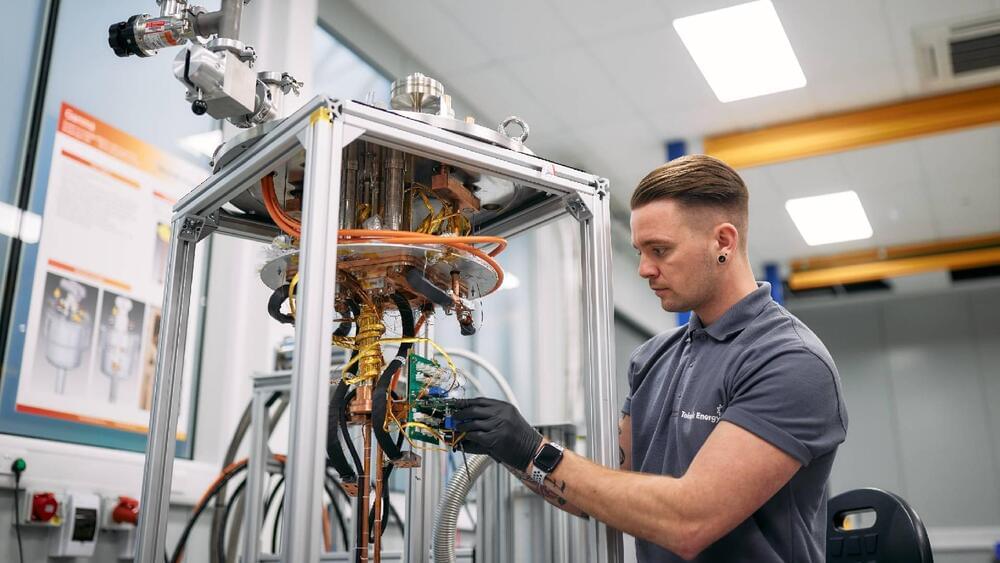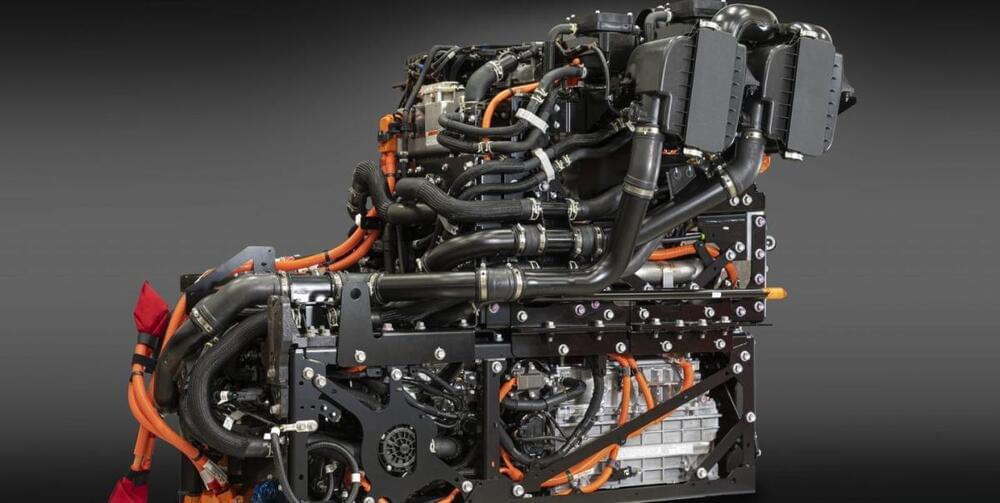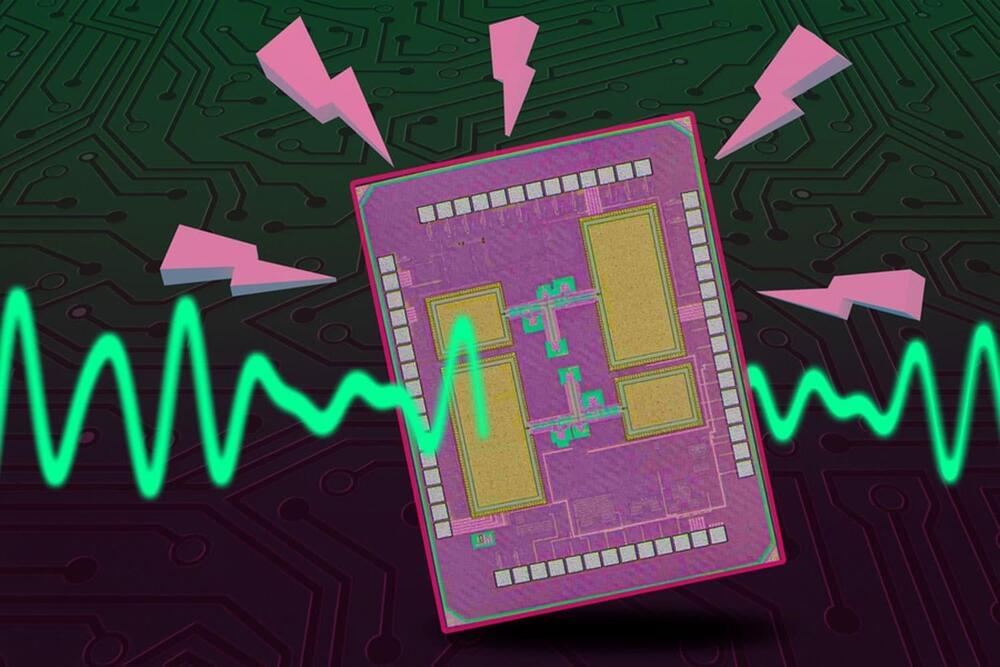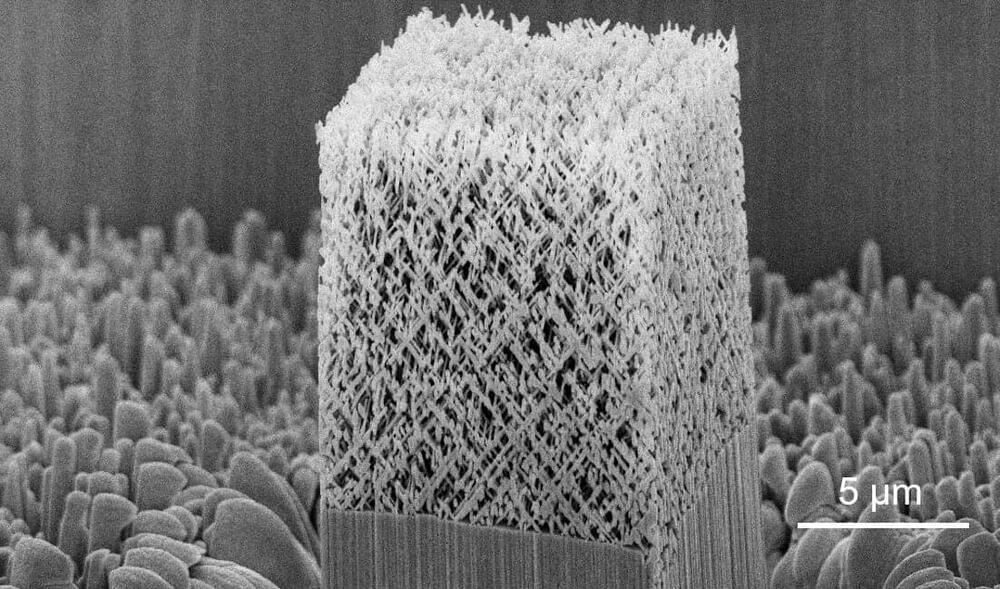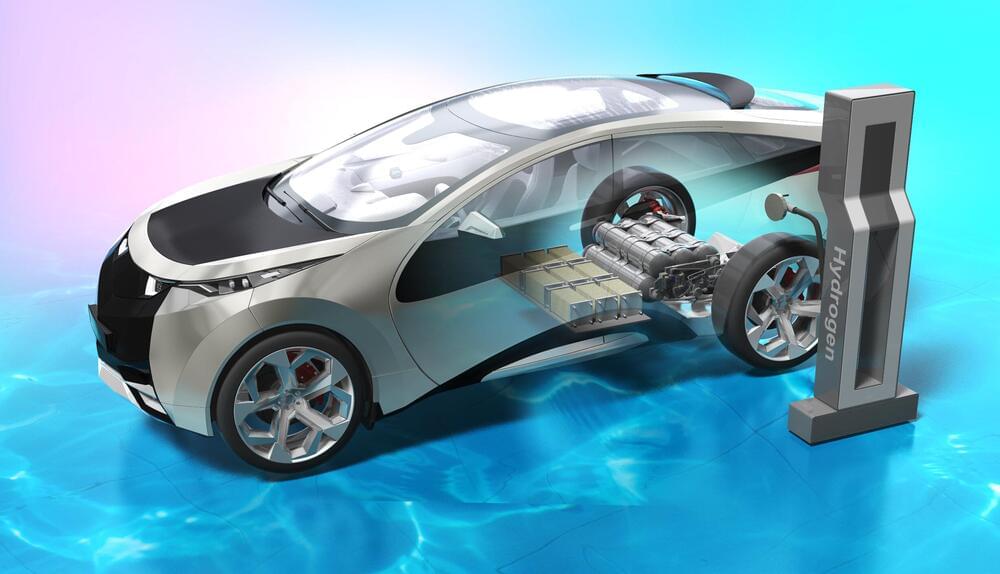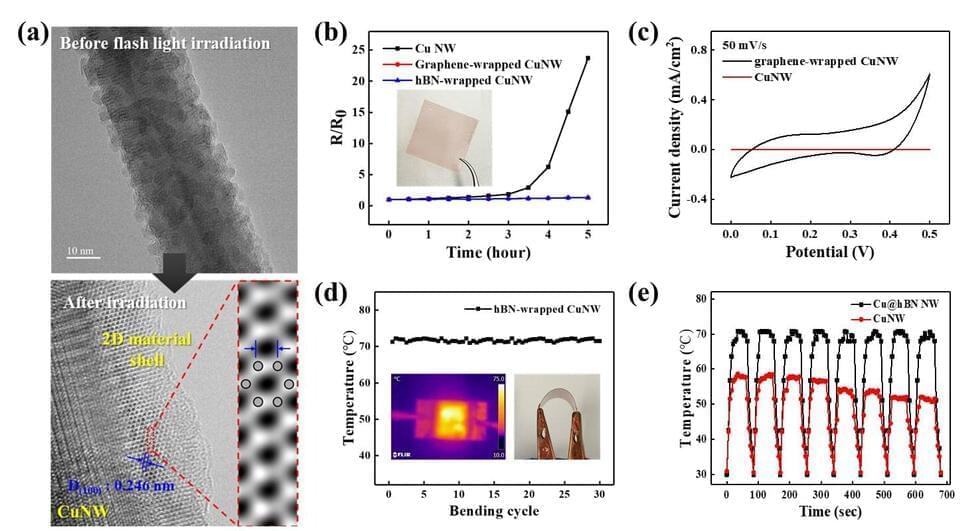Tokamak Energy announced through a press release on Thursday that its magnet technology will be exposed to extreme conditions to test lifetime fusion power plant performance in a US laboratory.
Category: energy – Page 114
The California Air Resources Board has issued an Executive Order for Toyota’s new hydrogen fuel cell swap kit for Class 8 heavy vehicles like semi trucks and busses. The kit turns diesel trucks into zero emission vehicles.
Researchers from EPFL and IBM have created a novel laser that could revolutionize optical ranging technology. This laser is constructed from lithium niobate, a material frequently utilized in optical modulators to regulate the frequency or intensity of light transmitted through a device.
Lithium niobate is highly valued for its ability to manage large amounts of optical power and its high “Pockels coefficient.” This allows the material to alter its optical properties when an electric field is applied to it.
The researchers achieved their breakthrough by combining lithium niobate with silicon nitride, which allowed them to produce a new type of hybrid integrated tunable laser. To do this, the team manufactured integrated circuits for light (“photonic integrated circuits”) based on silicon nitride at EPFL, and then bonded them with lithium niobate wafers at IBM.
The system helps to plug the gap when it comes to renewable energy sources.
As a solution to the unpredictable nature of renewable energy sources like solar and wind power, gravity batteries are being pitched as an ideal remedy. To further this cause, Swiss startup Energy Vault is now completing two such units, which are situated near Shanghai in China and Texas in the United States.
The basic idea behind a gravity battery system is to lift a heavy object, such as a large mass of concrete or a weight, on a pulley, using energy from a power source. When energy is needed, the thing can fall, and the potential energy is converted back into electricity.
Scientists demonstrate a low-power “wake-up” receiver one-tenth the size of other devices.
The Kardashev Scale
Posted in energy, physics, space | 1 Comment on The Kardashev Scale
The kardeshev scale of possible future technological advance.
In 1964, Russian astrophysicist Nikolai Kardashev figured that civilizations can be categorized by the total amount of energy available to them. He called it the Kardashev Scale. He initially came up with 3 civilization types; type 1, type 2, and type 3. However, other astronomers have recently extended the scale from type 0 all the way to type 7 as new theories in modern physics have emerged. Check out the complete playlist as we unveil each level of the Kardashev Scale! Enjoy the videos, and do let us know your thoughts in the comments!
Chinese researchers have successfully fabricated mechanical metamaterials with ultra-high energy absorption capacity using ion track technology. The results were published in Nature Communications as an Editor’s Highlight.
The study was conducted by the researchers from the Materials Research Center of the Institute of Modern Physics (IMP) of the Chinese Academy of Sciences (CAS) and their collaborators from Chongqing University.
Mechanical metamaterials refer to a class of composite materials with artificially designed structures, which exhibit extraordinary mechanical properties that traditional materials do not have. Among them, energy absorption mechanical metamaterials can absorb mechanical energy more efficiently, which requires the material itself to equip both high strength and high strain capacity, which, however, hardly co-exist in general.
In a project commissioned by the New Energy and Industrial Technology Development Organization (NEDO), researchers at Nagoya University in Japan have developed poly(styrenesulfonic acid)-based PEMs with a high density of sulfonic acid groups.
One of the key components of environmentally friendly polymer electrolyte fuel cells is a polymer electrolyte membrane (PEM). It generates electrical energy through a reaction between hydrogen and oxygen gases. Examples of practical fuel cells include fuel cell vehicles (FCVs) and fuel cell combined heat and power (CHP) systems.
The best-known PEM is a membrane based on a perfluorosulfonic acid polymer, such as Nafion, which was developed by DuPont in the 1960s. It has a good proton conductivity of 0.1 S/cm at 70–90 °C under humidified conditions. Under these conditions, protons can be released from sulfonic acid groups.
DGIST Professor Yoonkyu Lee’s research team used intense light on the surface of a copper wire to synthesize graphene, thereby increasing the production rate and lowering the production cost of the high-quality transparent-flexible electrode materials and consequently enabling its mass production. The results were published in the February 23 issue of Nano Energy.
This technology is applicable to various 2D materials, and its applicability can be extended to the synthesis of various metal-2D material nanowires.
The research team used copper-graphene nanowires to implement high-performance transparent-flexible electronic devices such as transparent-flexible electrodes, transparent supercapacitors and transparent heaters and to thereby demonstrate the commercial viability of this material.
Experiments show ease by which organisms can evolve the ability to harness sunlight for energy.
